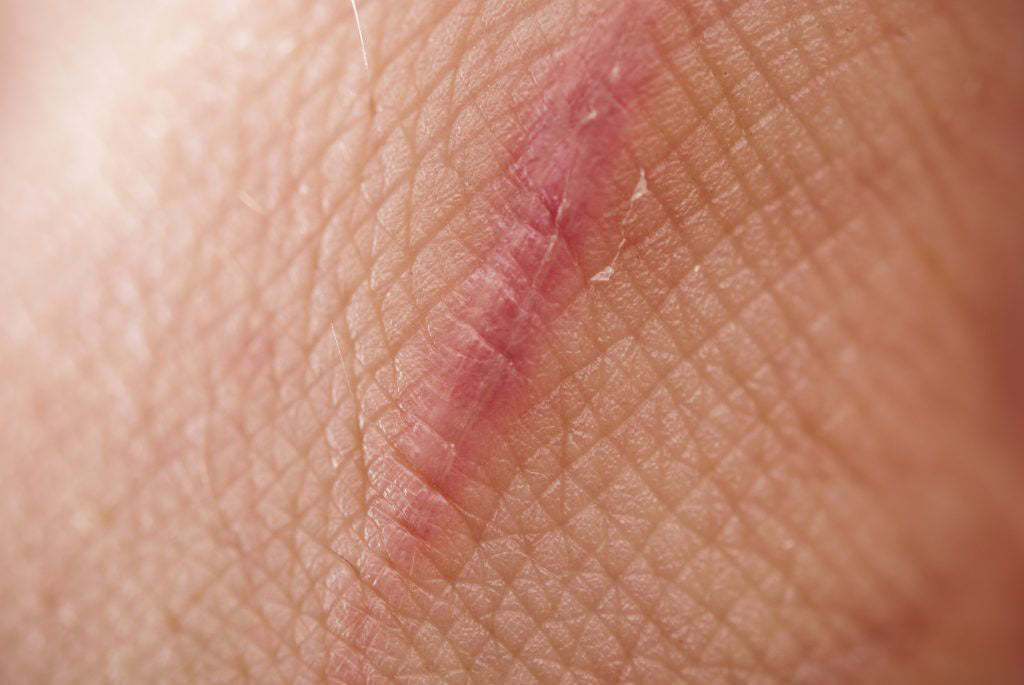No one is without scars. Biologically, scars protect your body from future damage, but they also remind us of where we have been and what we have survived. Even though most people understand the basics of what a scar is, these 10 facts about scarring will blow your mind.
1. Collagen, we trusted you.
Yes, the molecules that keep skin youthful and elastic are responsible for the scars on your body. I know, we're just as upset as you are. Visible scars are a result of over or underproduction of collagen in the skin following a trauma. Silicone sheets can help regulate a normal amount of collagen production by preventing water loss in the skin.
2. No fun in the sun for scars.
Scars are less resistant to UV radiation and therefore more prone to sunburn than normal skin. it is much more inferior in color, feel and function. Scarred skin should be protected from the sun all year round, not just on warm or sunny days, especially when it is healing.
3. Age, race and diet all tie into how your scar heals.
As you get older, skin cells are not repaired and renewed as quickly as they once did when you were young. Other factors like ethnicity, heredity, nutrition and location of the injury can affect the appearance of the scar too.
4. There are several types of scars and they are all unique.
There are different types of scars based on your skin type. The most severe types of scars are hypertrophic and keloid. They are harder, non-elastic and have tightness in the skin area. Additional scar types include atrophic, contracture (burns), and acne scars among others. Stretch marks are also a type of scar that forms on the surface of the skin as a result of sudden growth, weight gain, or pregnancy.
5. Scars can be sunken or pitted.
Pitted scars occur when the underlying structures such as fat and muscles are damaged. Surgical procedures and acne most often cause this type of damage. Some of the main causes for pitted scars is cystic acne and thin skin, which unfortunately can happen on the face. A scar gel will help with facial scars like this without clogging your pores too.
6. Piercings can leave scars too.
Scientists have noticed that there is a connection between body piercings and the formation of keloid scars. The piercing might become infected as a result of using unsterilized piercing equipment and create a scar. The location of the piercing may affect how likely it is to leave a scar afterward as well.
7. There is a reason why scars are red at first.
In order for the new skin to be formed at the injury site, blood must be supplied to the location. While a wound is healing, more blood vessels form to provide nutrients to the site. The increased blood flow gives the scar its discoloration.
8. It takes a while for a scar to settle.
After a wound closes and a scar begins to form, it continues changing for two years. A scar may look different days, weeks, and months after. They heal in three stages: the inflammatory stage, the proliferative stage and the remodeling stage. The inflammatory stage is when the scar is red and inflamed and only lasts a few days. The proliferative stage lasts a few weeks, this is when collagen begins to form. The remodeling stage is the final stage and it is when scars begin to fade and thin out.
9. Vitamin C isn't just a part of a well-balanced breakfast.
Vitamin C, like most effective scar treatments, reduces the dark pigmentation of scars. Vitamin C is an antioxidant that is recommended to treat dark spots and sun damage because it brightens the skin. Vitamin C can also be applied on top of a scar cream or scar gel.
10. Ready, set, treat! Quicker treatment gives the best results.
As soon as a wound is closed, dry and any sutures are removed, treatments like silicone scar sheets or scar gels can be applied to the area to reduce the appearance of any scars.
Scars can be a great reminder of a life well lived. The scar on your chin, that mark on your elbow, they all have their own story that adds to the book of your life. As this list of facts demonstrates though, scars can also be complex. Scars can inhibit everyday life and harm a person’s confidence, leading them to make the personal choice of seeking treatment. Talk to your dermatologist to find the best way to heal your scar, because every scar and skin type is different and should have a personalized treatment plan. Visit Rejuvaskin.com to explore the many different types of scar management products and find out what approaches are best for your skin.





















Leave a comment